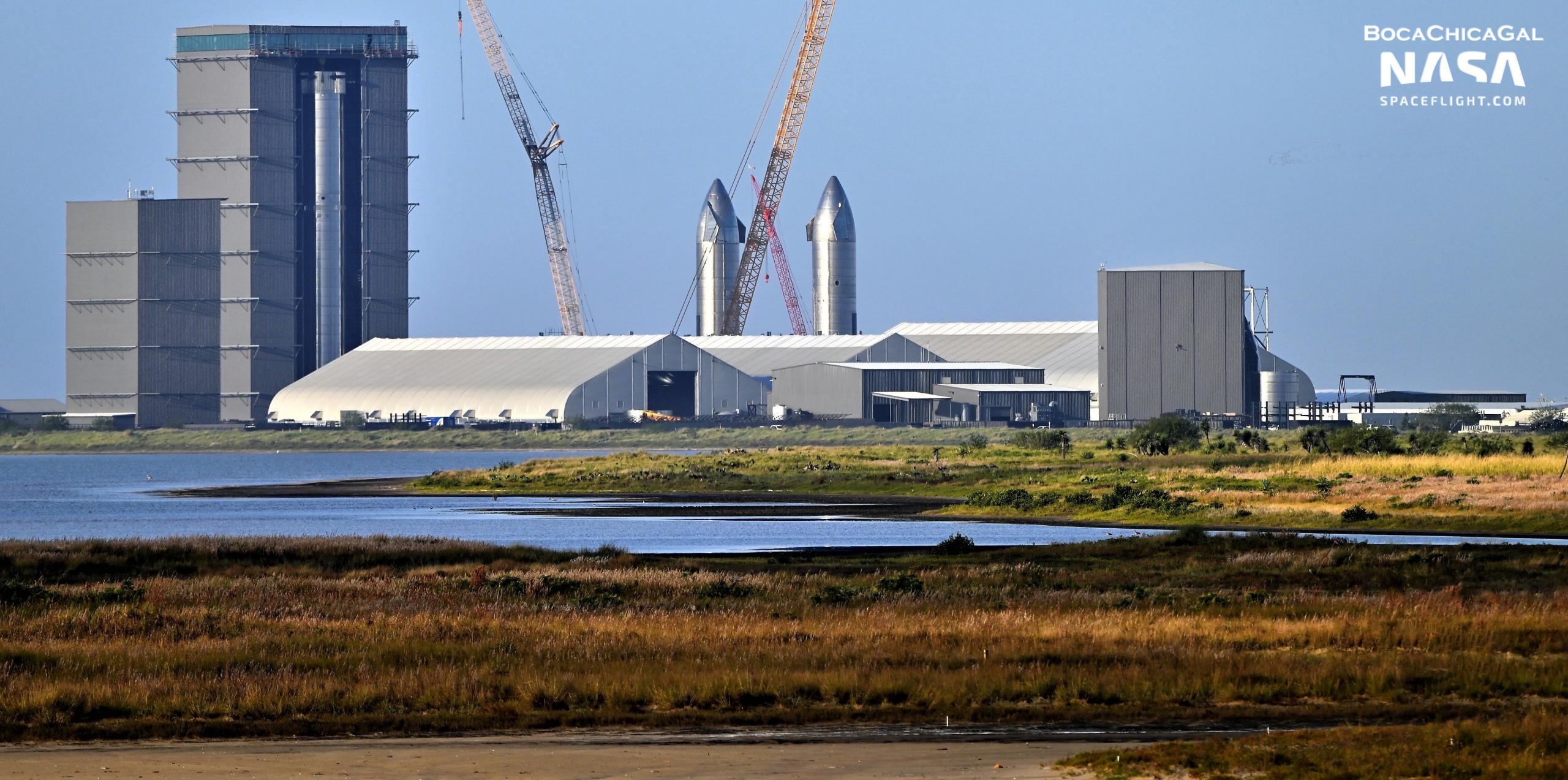
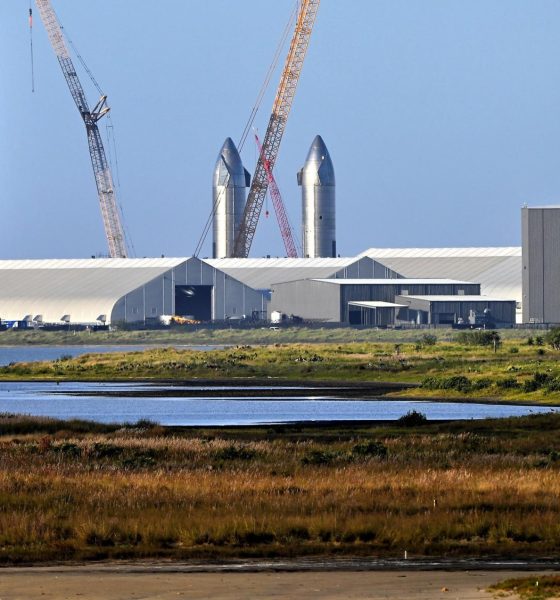
News
SpaceX’s South Texas Starship factory prepares for major upgrades
In what is probably a sign of things to come for SpaceX’s nascent Florida Starship factory, the company’s original Starbase facility in South Texas may be about to graduate from tents to more permanent buildings.
More than two years ago, in late 2019, SpaceX followed in the footsteps of Tesla and began constructing a surprisingly advanced factory out of a series of tents. Instead of Model 3s, though, SpaceX would be building and assembling sections of the largest and most powerful rocket ever built. Measuring approximately 120 meters (~390 ft) tall, 9 meters (~30 ft) wide, ~5000 tons (~11M lb) fully fueled, and capable of producing around 7500 tons (~16.5M lbf) of thrust at liftoff, Starship is a fully reusable rocket that aims to perfect what SpaceX has already achieved with partially reusable Falcon 9s and Heavies.
Nonetheless, Starship manufacturing represents a substantial departure from the methods SpaceX uses to build Falcon rockets.
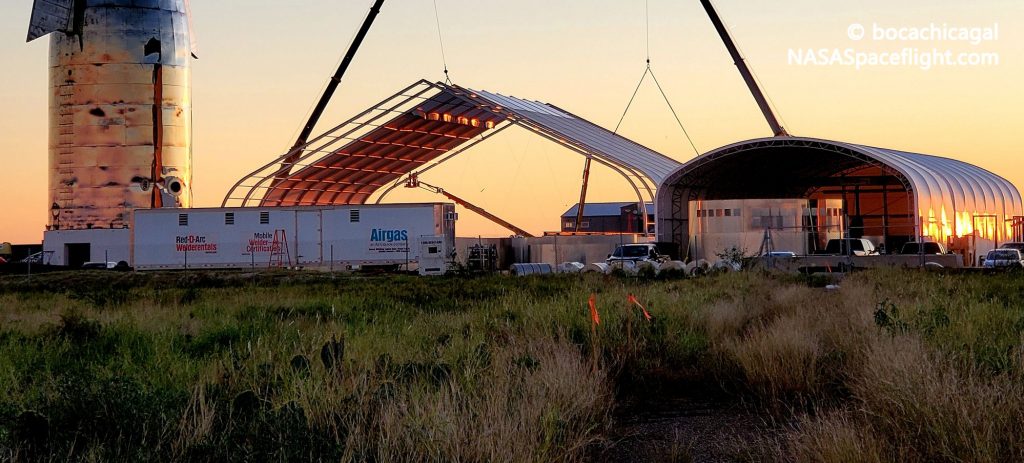
Instead of heavily leaning on horizontal integration (meaning that the rockets are primarily assembled in a horizontal orientation), Starship and its Super Heavy booster are almost exclusively assembled vertically. Excluding the machining of major loadbearing structures, Starship manufacturing generally begins with giant rolls of thin (3-4mm or ~0.15 in) stainless steel. SpaceX uses a custom tool to unspool the sheet metal, cuts off a roughly 28-meter (~92 ft) long strip, and then welds the ends of that strip together to produce a cylindrical barrel. Repeat that process 57 times and you end up with enough rings to assemble a full Super Heavy booster and most of a Starship.
However, using increasingly custom tools, SpaceX first stacks and welds those individual rings together to form sections of two, three, four, or five. Each section is then prepared for its specific role with a range of cutouts, plumbing, reinforcements (vertical stringers or circumferential stiffeners), thrust structures (the plates that Raptor engines attach to), and other add-ons. Most importantly, certain stacks of rings are mated with large steel domes – welded together out of prefabricated steel plates – to form forward, common, and aft dome sections. For Starship, SpaceX also assembles the ship’s conical nose section in a similar manner.
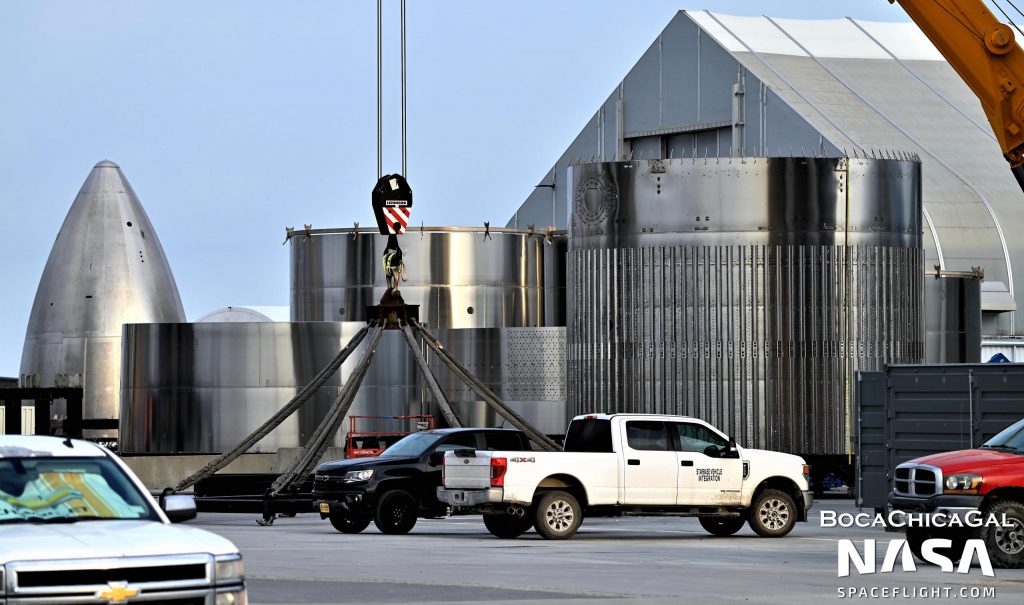
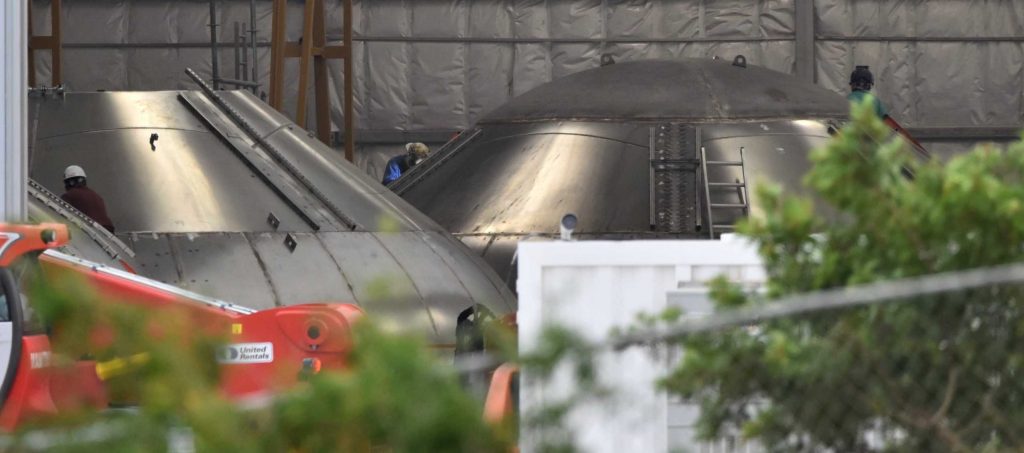
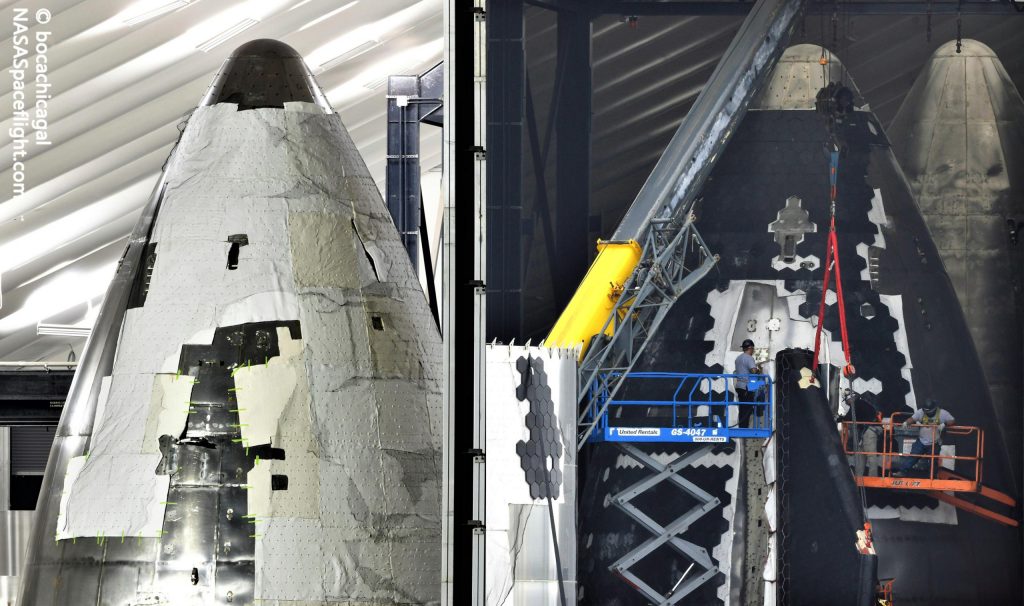
Virtually all ring, dome, and nose assembly work is conducted in one of three massive tents – each about 114m x 35m (375′ x 110′) – that form the backbone of Starbase’s Starship factory. Finally, SpaceX has built a series of massive open-air bays where, once fully outfitted, each ship and booster section is stacked in a specific order and welded together to complete the basic structures of Starship and Super Heavy.
While SpaceX continues to speed towards the completion of Starbase’s largest and tallest Starship assembly bay yet, the latest news centers around Starbase’s tents. After physically relocating a smaller but still substantial tent believed to be used basic metalwork (laser/water cutting, presses, etc.), SpaceX has rapidly broken ground and partially completed the foundation of a massive, new building believed to be the start of an upgraded Starship factory.
According to RGV Aerial Photography, SpaceX isn’t merely expanding the main three-tent factory with a fourth larger, permanent building. Instead, it reportedly aims to replace all of Starbase’s tents with a single 300,000-square-foot (~28,000 square meter) building that will be about 18 meters (60 ft) tall and likely measure around 800 feet (250m) long and 400 feet (120m) wide. Starbase’s tents are roughly the same height but their tented roofs mean that only a fraction of that height can be used for ring work and only a fraction of the floor space for taller nose work.
In comparison, a 300,000 square-foot building would have almost two and half times as much covered floor space as Starbase’s three tents – all of which can theoretically be used for ring and nose section assembly. In fact, with a mostly flat 18-meter roof, SpaceX could feasibly expand most ‘stacks’ by a ring or two, which would reduce the number of sections (and thus stacking operations) needed to assemble a ship or booster.
All told, while tents (“sprung structures”) can clearly be indefinite solutions for things like automotive manufacturing, Starship production is one case in which a more permanent flat-ceiling building is undeniably superior. With more than two years of experience and data to draw from, SpaceX may finally be confident enough in its present-day Starship production methods to commit to the construction of Starbase’s next evolution. Stay tuned to see where it leads.

News
Tesla FSD Supervised ride-alongs in Europe begin in Italy, France, and Germany
The program allows the public to hop in as a non-driving observer to witness FSD navigate urban streets firsthand.

Tesla has kicked off passenger ride-alongs for Full Self-Driving (Supervised) in Italy, France and Germany. The program allows the public to hop in as a non-driving observer to witness FSD navigate urban streets firsthand.
The program, detailed on Tesla’s event pages, arrives ahead of a potential early 2026 Dutch regulatory approval that could unlock a potential EU-wide rollout for FSD.
Hands-Off Demos
Tesla’s ride-along invites participants to “ride along in the passenger seat to experience how it handles real-world traffic & the most stressful parts of daily driving, making the roads safer for all,” as per the company’s announcement on X through its official Tesla Europe & Middle East account.
Sign-ups via localized pages offer free slots through December, with Tesla teams piloting vehicles through city streets, roundabouts and highways.
“Be one of the first to experience Full Self-Driving (Supervised) from the passenger seat. Our team will take you along as a passenger and show you how Full Self-Driving (Supervised) works under real-world road conditions,” Tesla wrote. “Discover how it reacts to live traffic and masters the most stressful parts of driving to make the roads safer for you and others. Come join us to learn how we are moving closer to a fully autonomous future.”
Building trust towards an FSD Unsupervised rollout
Tesla’s FSD (Supervised) ride-alongs could be an effective tool to build trust and get regular car buyers and commuters used to the idea of vehicles driving themselves. By seating riders shotgun, Tesla could provide participants with a front row seat to the bleeding edge of consumer-grade driverless systems.
FSD (Supervised) has already been rolled out to several countries, such as the United States, Canada, Australia, New Zealand, and partially in China. So far, FSD (Supervised) has been received positively by drivers, as it really makes driving tasks and long trips significantly easier and more pleasant.
FSD is a key safety feature as well, which became all too evident when a Tesla driving on FSD was hit by what seemed to be a meteorite in Australia. The vehicle moved safely despite the impact, though the same would likely not be true had the car been driven manually.
News
Swedish union rep pissed that Tesla is working around a postal blockade they started
Tesla Sweden is now using dozens of private residences as a way to obtain license plates for its vehicles.

Two years into their postal blockade, Swedish unions are outraged that Tesla is still able to provide its customers’ vehicles with valid plates through various clever workarounds.
Seko chairman Gabriella Lavecchia called it “embarrassing” that the world’s largest EV maker, owned by CEO Elon Musk, refuses to simply roll over and accept the unions’ demands.
Unions shocked Tesla won’t just roll over and surrender
The postal unions’ blockade began in November 2023 when Seko and IF Metall-linked unions stopped all mail to Tesla sites to force a collective agreement. License plates for Tesla vehicles instantly became the perfect pressure point, as noted in a Dagens Arbete report.
Tesla responded by implementing initiatives to work around the blockades. A recent investigation from Arbetet revealed that Tesla Sweden is now using dozens of private residences, including one employee’s parents’ house in Trångsund and a customer-relations staffer’s home in Vårby, as a way to obtain license plates for its vehicles.
Seko chairman Gabriella Lavecchia is not pleased that Tesla Sweden is working around the unions’ efforts yet again. “It is embarrassing that one of the world’s largest car companies, owned by one of the world’s richest people, has sunk this low,” she told the outlet. “Unfortunately, it is completely frivolous that such a large company conducts business in this way.”
Two years on and plates are still being received
The Swedish Transport Agency has confirmed Tesla is still using several different workarounds to overcome the unions’ blockades.
As noted by DA, Tesla Sweden previously used different addresses to receive its license plates. At one point, the electric vehicle maker used addresses for car care shops. Tesla Sweden reportedly used this strategy in Östermalm in Stockholm, as well as in Norrköping and Gothenburg.
Another strategy that Tesla Sweden reportedly implemented involved replacement plates being ordered by private individuals when vehicles change hands from Tesla to car buyers. There have also been cases where the police have reportedly issued temporary plates to Tesla vehicles.
News
Czech Deputy excited for Tesla FSD, hints at Transport Committee review
The ANO party lawmaker shared his thoughts about FSD in a post on social media platform X.
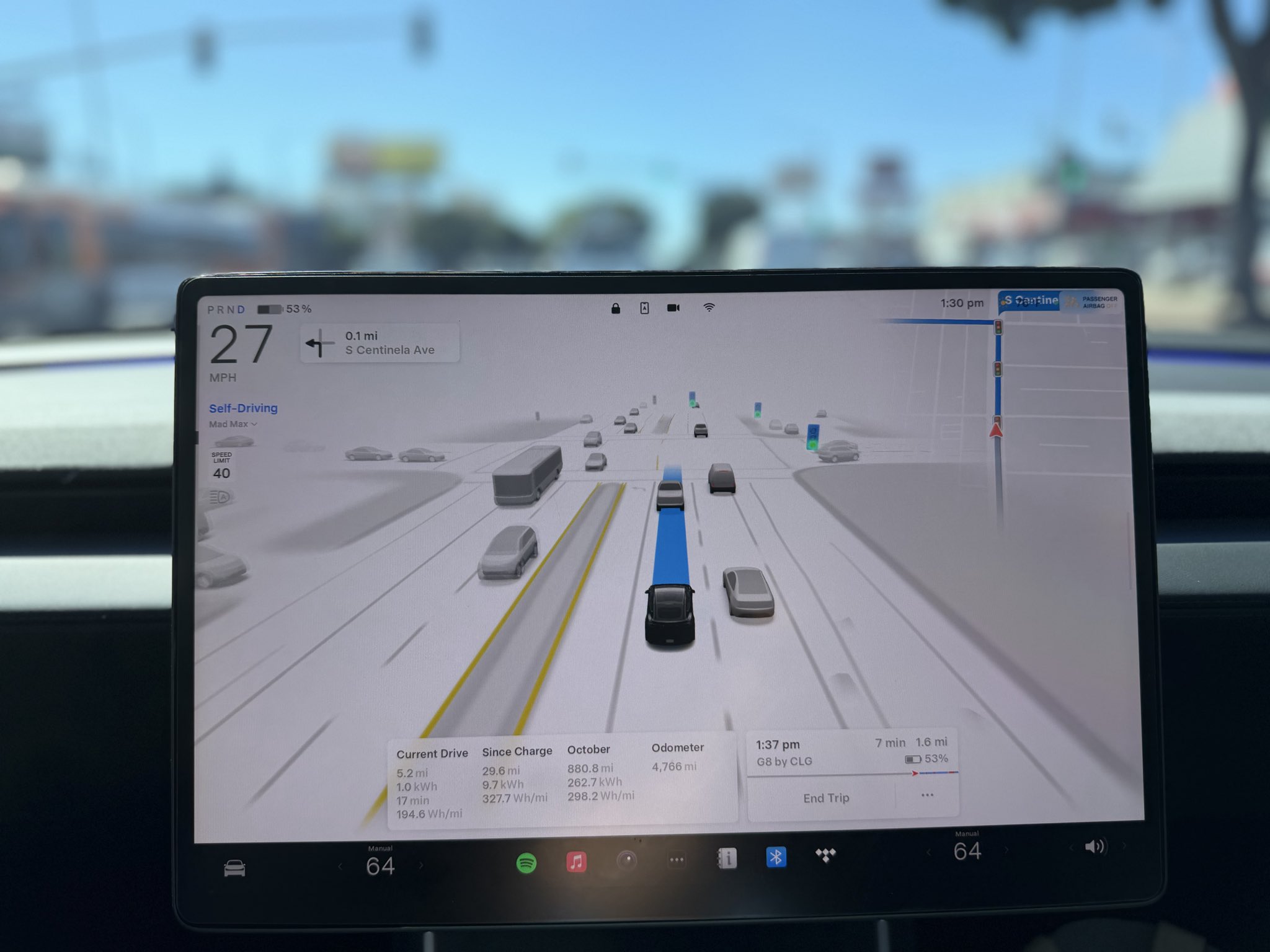
Martin Kolovratník, a Czech Republic Chamber of Deputies member, has expressed his excitement for Tesla’s Full Self-Driving (FSD) after an apparent constituent called for a quick approval for the advanced safety system.
The ANO party lawmaker, who drives both diesel and EV, shared his thoughts about the matter in a post on social media platform X.
The official’s initial statements
Kolovratník kicked off the exchange with a post outlining his coalition’s efforts to scrap highway toll exemptions for electric vehicles and plug-ins starting in 2027.
“Times have changed. Electric vehicles are no longer a fringe technology, but a full-fledged part of operations. And if someone uses the highway network, they should follow the same rules as everyone else. That’s the basis of fairness,” he wrote.
He emphasized equity over ideology, noting his personal mix of diesel and electric driving. “For this reason, there is no reason to continue favoring one technology at the expense of another… It’s not about ideology, it’s about equal conditions. That’s why we clearly agreed within the new coalition: the exemption for electric vehicles and plug-ins will end in 2027. The decision is predictable, understandable, and economically sound.”
Tesla FSD enthusiasm
The conversation pivoted to Tesla’s FSD when X user @robotinreallife, who seems to be one of the official’s constituents, replied that other matters are more important than ending highway exemptions for EVs.
“I’m happy to pay for the highway, but I have a question about a much more fundamental matter: The Netherlands will approve the operation of Tesla FSD in February 26, a technology that has been proven to reduce accidents. The Czech Republic has the option to immediately recognize this certification. Do you plan to support this step so that we don’t unnecessarily delay?” the X user asked.
Kolovratník responded promptly, sharing his own excitement for the upcoming rollout of FSD. “I know about it. I like it and it seems interesting to me. Once we set up the committees and subcommittees, we’ll open it right away in that transport one. Thanks for the tip, I’ll deliver the report,” the official noted in his reply on X.
Kolovratník’s nod to FSD hints at the system’s potentially smooth rollout to Czechia in the coming year. With the Netherlands possibly greenlighting FSD (Supervised) in early 2026, Kolovratník’s commitment could accelerate cross-border certification, boosting FSD’s foray into Europe by a notable margin.









